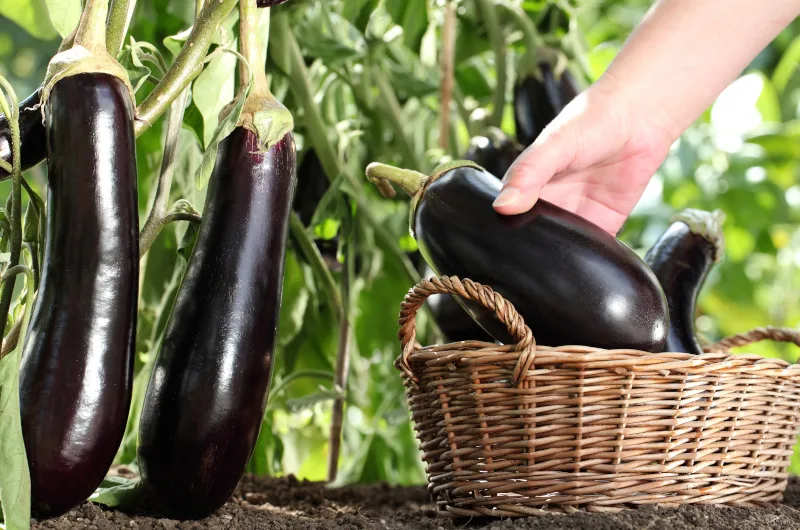How To Grow Aubergines
Aubergines, also known as eggplants, are a versatile and delicious addition to any garden or greenhouse. These glossy, attractive purple or white fruits can be used in a variety of culinary delights, from rich stews to Mediterranean-inspired dishes. If you’re wondering how to grow aubergines in your British garden, you’re in the right place. In this article, we will provide you with valuable insights, tips, and answers to common questions to ensure your aubergine-growing journey is a success.
Choose the Right Variety
Aubergines come in various shapes and sizes, and some of the popular varieties include “Black Beauty” and “White Knight F1”. Select the variety that suits your taste and garden space. “Black Beauty” is a classic choice, known for its deep purple fruits, while “White Knight F1” produces white aubergines.
Find the Perfect Spot
Aubergines thrive in sunny spots, so choose a location in your garden or greenhouse that receives at least 6-8 hours of sunlight daily. The British climate can be challenging, but a warm, sheltered spot can provide the right conditions for these tender plants.
Sow Aubergine Seeds
To get a head start on the growing season, sow aubergine seeds indoors in early March. Fill small pots with seed compost, plant the seeds about 1 cm deep, and water with tepid water. Cover the pots with plastic or a propagator lid to maintain humidity.
Provide the Best Care
Aubergines require good light and warmth to flourish. Keep the young plants in a heated greenhouse or on a sunny windowsill until the risk of frost has passed, usually in late spring or early summer. Use a tomato feed to nourish the plants and ensure vigorous growth.
Plant in the Right Place
When transplanting your aubergine seedlings, make sure the soil surface is enriched with organic matter. Plant them at least 45-60 cm apart to allow for proper air circulation and prevent the spread of diseases.
Maintain Consistent Care
Throughout the growing season, monitor your aubergines for any signs of pests, as greenhouse pests can be a problem. Regularly water your plants to keep the soil consistently moist but not waterlogged. A drip irrigation system can be a helpful addition for efficient watering.
Harvest at the Right Time
Aubergines have a long growing season, often extending to the end of summer. Harvest the fruits when they reach a desirable size and have a glossy appearance. Simply cut them from the plant with scissors or pruning shears.
Aubergine Growing FAQs
Are aubergines easy to grow?
Growing aubergines can be moderately challenging due to their sensitivity to cold weather, but with the right conditions and care, they can thrive in a British garden.
How long does it take for an aubergine to grow?
Aubergines typically take 75 to 85 days to mature from the time of transplanting seedlings into the garden.
Do you pinch out side shoots on aubergine plants?
Yes, it’s advisable to pinch out side shoots to encourage a single stem and better fruit production.
How many aubergines can you get from one plant?
One healthy aubergine plant can yield several fruits, with the exact number depending on factors like variety, care, and growing conditions.
Do aubergines grow back every year?
No, aubergines are annual plants and do not grow back year after year. You need to replant them each season.
Should eggplant be grown in pots or ground?
You can grow aubergines in both pots and the ground. However, they often thrive in large containers with rich soil, ensuring good drainage.
Do you need two eggplants to produce?
No, a single aubergine plant can produce fruit on its own. Unlike some other fruits and vegetables, aubergines do not require cross-pollination.
Does eggplant like lots of water?
Aubergines prefer consistent moisture, so keep the soil consistently moist but not waterlogged. Adequate watering is crucial for their growth.
What happens if you leave aubergines on the vine too long?
If you leave aubergines on the vine too long, they may become overripe, develop a bitter taste, and have tougher skins. It’s best to harvest them at the right stage of maturity for the best flavor and texture.
In conclusion, growing aubergines in your British garden can be a rewarding experience with delicious results. By providing the right conditions, care, and attention to detail, you can enjoy a bountiful harvest of these versatile and tasty vegetables. Whether you choose classic “Black Beauty” or “White Knight F1,” your homegrown aubergines will add a delightful touch to your culinary creations.



